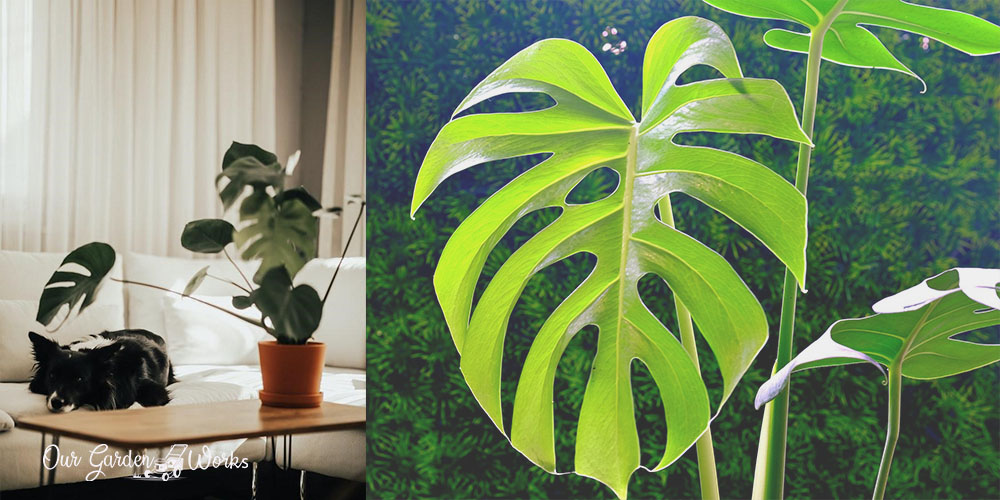What is Monstera without its iconic leaf holes and splits? Most gardeners buy and cultivate monstera for its unique leaf shape. So, seeing the leaves without holes can be disappointing. It’s only natural to ask: why does my monstera have no holes? Is this a real monstera?
Well, it’s natural to have monstera leaves with no holes but not for the long run.
In this post, we will discuss the most common issue that new monstera growers encounter: no-hole or no-split monstera leaves.
We will also share the unique process of monstera in developing their iconic but delicate leaves.
Monstera leaves without holes do not mean you’ve been duped. They just lack a little love.
Q: Why Does My Monstera Have No Holes?
Monstera leaves have no holes because of two possible reasons: pre-mature leaves and lack of enough exposure to sunlight. The holes or fenestrations in monstera leaves are not immediately developed upon the emergence of the leaves.
They only develop when the plant is already established, therefore marking it as a sign of maturity. Usually, it takes around 2 to 3 years for a monstera to mature which also begins the splitting and development of holes on its leaves.
If you’re growing a monstera plant for two to three years and it still has some leaves that have no holes, then it’s a good indication it lacks enough sunlight exposure.
Other signs of inadequate sunlight include:
- The soil stays wet after several hours of watering.
- Leaf discoloration starts to develop due to the failure of the sun to dry up the soil that usually leads to overwatering root rot issues.
- The plant is experiencing slow growth due to low energy to increase leaf size and stem diameter.
Fenestration or hole development in monstera plants has sparked so many debates among biologists and gardeners. Several theories include:
- Protection against the wind.
- Water drainage.
- Maximize sunlight absorption.
In their natural habitat, monstera is found at the foot of trees hiding away from direct sunlight.
While most of the theories are valid when it comes to the purpose of the leaf fenestrations, the sunlight absorption theory has a more backbone based on several studies.
According to a study conducted by Christopher Muir from the University of Chicago, the fenestrations from the mature leaves help spread the little amount of sunlight monstera receives throughout the plant. Since they grow under the canopies of trees, they use the fenestrations to efficiently absorb sunlight.
Christopher Muir explains that the vertical growing habit of monstera allows the mature leaves with holes to sit on top of the young leaves without blocking the sunlight. The sunlight passes through holes and manages to fall on upper and lower leaves at the same time.
Leaf development of monstera
As a monstera mom or pop, it pays to know what to expect from your monstera plants and not to lose hope when they are not developing fenestrations.
Here is a brief guide on how the fenestrations in monstera plants develop from seedling to maturity:
#1 New leaves
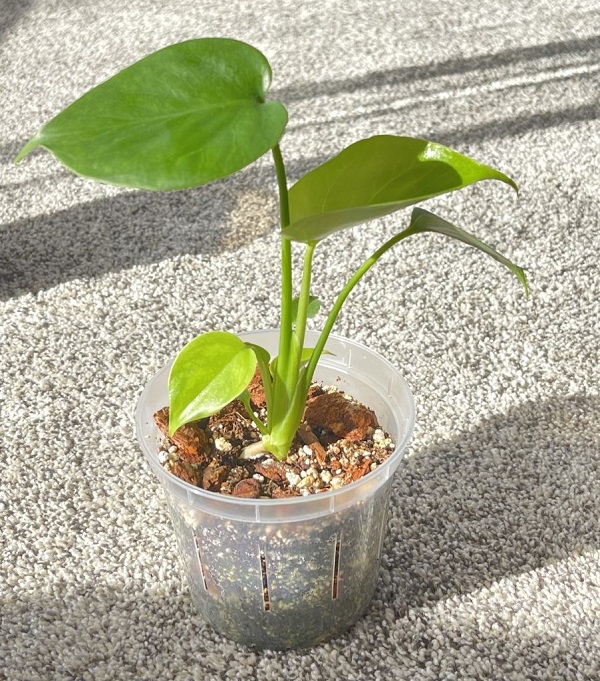
The first leaves of monstera plants are shaped like hearts. You wouldn’t recognize them through their leaves just yet. At this stage, they are considered terrestrial plants since they are still growing their aerial roots.
Most monstera species will focus on growing their crawling stem vertically. It is their attempt to develop aerial roots on the nodes and successfully climb trees.
Some just stay as terrestrial plants and just grow in size without the wandering stem and roots like Monstera Adansonii.
On the other hand, some will start to develop the stem and their roots towards the dark like Monstera Dubia. It is their unique way of adapting to the wild by considering the dark as the shadow of a tree.
#2 Development of splits and holes
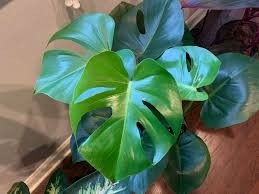
The duration of the development of splits and fenestrations in monstera depends on the variety. Some are fast to mature while others can take 8 years to develop mature leaves.
Aside from the changes in the leaves, monstera will develop plenty of aerial roots and start climbing on a trellis or tree. At some point, they will start to abandon their soil roots and start feeding through their aerial roots.
Some monstera varieties will remain as terrestrial plants and only increase in size in terms of their stem and petiole diameter and leaf size. The best example of this is the grower-favorite Monstera Deliciousa.
Monstera plants do not develop fenestrations and holes overnight. They start the process by developing holes near the middle of the leaf.
Then, the hole grows in size until it reaches the edge of the leaf. Once it reaches the edge, it will form a split.
#3 Flower and seed development
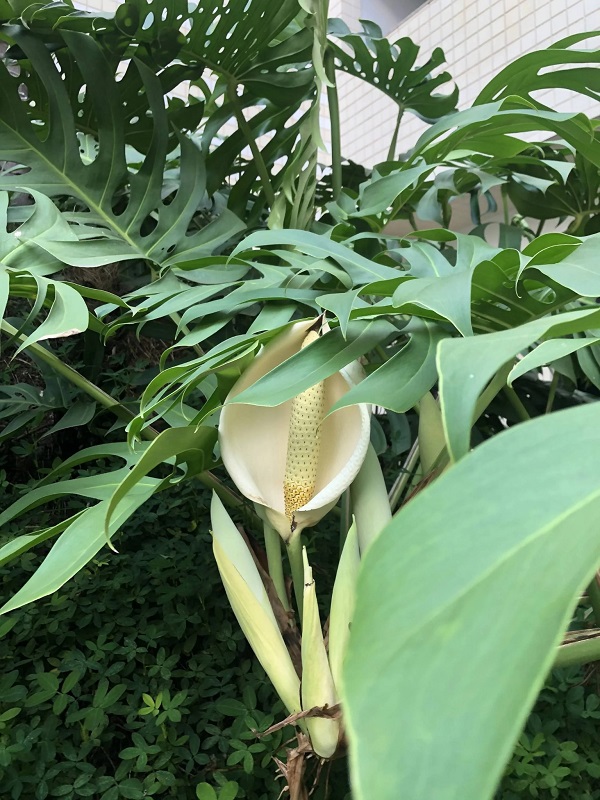
When monstera plants reach their full maturity, they will start developing flowers followed by their fruits.
The flowers take around 2 to 5 years to develop since maturity. Aside from their beautiful leaves, monstera species develop 2 to 4 beautiful flowers in their lifetime.
The monstera flowers have a noticeable erect spadix where the seeds grow covered with a white leaf-like spathe. In optimal growing conditions, these elusive flowers emerge 2 to 3 years after planting.
However, some species that take a longer time to mature result in delayed flowering, lasting for almost 8 to 9 years. The perfect example for this is Monstera lechleriana which takes 8 years to show its elusive flowers.
Pro tip: If you don’t have the patience that it takes to wait for the holes to develop in monstera plants, you may opt for growing a different plant specie. Epipremnum pinnatum or dragon tail plant grows fenestrated and split leaves from the get-go. They are often mistaken as monstera since the resemblance to it is uncanny.
Monstera varieties and their leaf development behavior upon maturity
Monstera have 59 species that include some of the rarest types that can be only found in the wild.
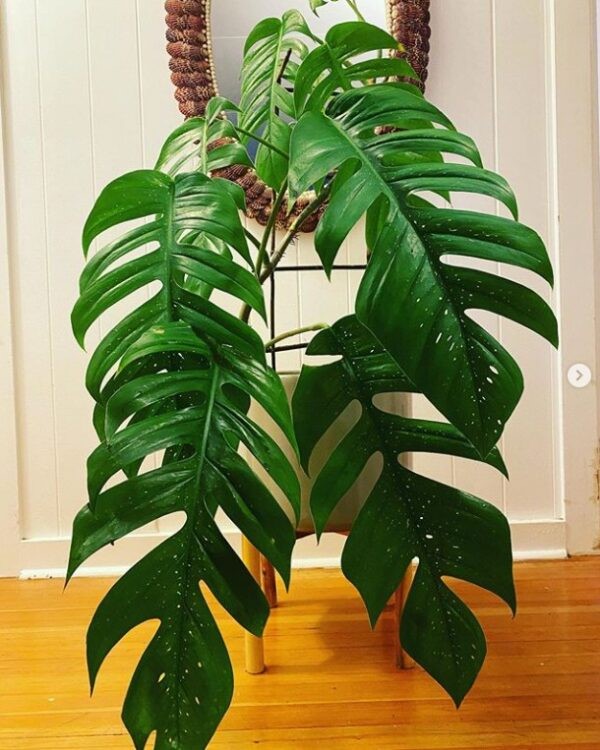
Though they are iconic for their split and holed leaves, some varieties do not go with the crowd and remain whole for the rest of their lifetime.
We categorized the monstera varieties into four groups based on their leaf development upon maturity:
| Category 1: With splits and fenestrated leaves | Category 2: With fenestrations only | Category 3: With splits only | Category 4: No splits and fenestrations |
|---|---|---|---|
| Monstera Deliciosa Monstera Dubia Monstera Epipremnoides Monstera Pinnatipartita Monstera Borsigniana Monstera Punctulata | Monstera Adansonii Monstera Acuminata Monstera Adansonii Monstera Siltepecana MonsteraacacoyAguensis Monstera Lechleriana Monstera Obliqua Monstera Acacoyaguensis Monstera Epipremnoides Monstera Esqueleto | Monstera Subpinnata Monstera Dissecta Monstera Spruceana | Monstera Standleyana Monstera Peru |
Tips on how to improve the leaf development of monstera
Monstera varieties are quite easy to grow but they will give you the best-looking leaves if you give them their preferred growing environment.
Here are some tips that you can try:
(1) Monstera plants grow well outdoors in USDA Hardiness zones 10b to 12. They grow best at temperatures from 65°F to 85°F.
They can get easily stressed by extreme and sudden changes in temperature like cold drafts and heat waves. So, make sure they are placed away from heaters and air conditioning units.
(2) Unlike other houseplants, monstera needs bright indirect light. Too much light can cause sunburns on the leaves and low light can lead to having leaves with no holes and leggy growth.
The best locations to place your monstera indoors are as follows:
- Close to the eastern window.
- Southern window.
- Southeastern part of the house.
(3) The light exposure of the monstera plants is directly related to their susceptibility to overwatering, leaf discoloration, and stunted growth issues.
Some people might be appropriately watering their monstera but end up with overwatering issues due to inadequate light exposure.
The sun not only helps provide energy to plants but also supports the proper evaporation of excess moisture in the soil. So, the next time you have problems with root rot or overwatering, you should check the sun that the plant receives and the soil drainage.
The top 2 inches of the soil must be dry before watering your monstera plants. The water should flow through the drainage holes to ensure that the soil drainage is working well for the plant. If not, then the plant might be pot-bound or too compact.
(4) Monstera needs humidity just as it needs sunlight and water. It needs a 60% to 80% humidity level to ensure that its leaves receive moisture from the air. Otherwise, the leaves will become droopy and show signs of heat and drought stress.
Humidity usually decreases when it’s getting colder. To adjust the humidity level, you may use a humidifier or dot the following steps:
- Place a pebble at the bottom of the pot.
- Move other houseplants close to your monstera pot.
- Place it in your bathroom.
- Misting.
(5) To avoid overwatering issues in your monstera, use fast-draining materials such as:
- Carbonized rice hull.
- 40 % Perlite + 30% compost + 30% garden soil.
- 50% Coco cubes + 20% pumice or perlite + 10% coco peat + 30% worm castings.
(6) The most recommended pot for both monstera and philodendron is the terracotta pot due to its ability to absorb excess moisture, dry out the soil mix, and improve microclimate within the pot.
Plastic and porcelain pots are okay as long as they provide efficient water drainage.
(7) Make sure that you wipe the monstera leaves at least once a week to remove the collected dust. Too much dust on the leaf surface will affect their ability to efficiently absorb sunlight which consequently affects their health.
(8) The more light monstera receives, the bigger the fenestrations they can develop. So, if you want them to have bigger holes, expose them more to bright indirect light indoors or bring them outdoors under the trees.
Frequently Asked Questions (FAQs)
Should I cut Monstera leaves without holes?
No, you should not cut Monstera leaves without holes since the fenestration can still occur as soon as the plant is ready for it. Leaving them on the plant can help it produce more energy to develop new leaves with splits and fenestrations.
You may prune the yellowing and drying Monstera leaves to boost the health of the plant. However, if the leaves are still green regardless if they have holes or not, you can let them stay and help keep your monstera plant healthy.
How long does it take for Monstera to get holes?
A Monstera plant develops holes as soon as it reaches its maturity which typically takes around two to three years. However, some monstera varieties do not develop any fenestration or split throughout their lifetime like Monstera Standleyana.
Why is there no fenestration in Monstera?
The fenestration or the holes do not exist on the leaves when the plant is still young. They only develop after 2 to 3 years upon the maturity of monstera plants. If they fail to develop any fenestration after several years, then they lack enough light exposure to develop such fenestrations.
How do I know if my Monstera is happy?
Some of the telltale signs that your Monstera is happy are as follows:
- Lush green leaves that continuously grow in size every year.
- The stem and roots continue to crawl or grow in diameter.
- The fenestration and splits develop on time.
- The plant may develop its flowers early and begin to develop fruits.
How do you encourage fenestration?
The only way to encourage fenestration is to give your Monstera plants longer exposure to bright indirect light and keep it healthy. No matter how much you feed or water them, without the sun, they won’t develop their iconic leaf patterns.
Final Thoughts
We hope this post helped answer the most common FAQ about Monstera: why does my monstera have no holes?
So, whenever you encounter a Monstera that has no holes, you’ll easily recognize that they’re probably too young or just lack enough sunlight.
Once all the growing conditions are ideal, the new leaves of Monstera after the no-hole leaves will have its unique leaf pattern again.
It can be sad to see the odd ones on the plant, but it’s not necessary to cut the leaves without holes. They may not be aesthetically pleasing but they still have a purpose in keeping the plant healthy until it develops its first blooms and fruits.
Let us know in the comments the weird theories you have in mind about the Monstera leaves without holes! The funnier the better!
Also, share this post with fellow Monstera growers and save them from the anxiety of worrying about what went wrong with their plant.
